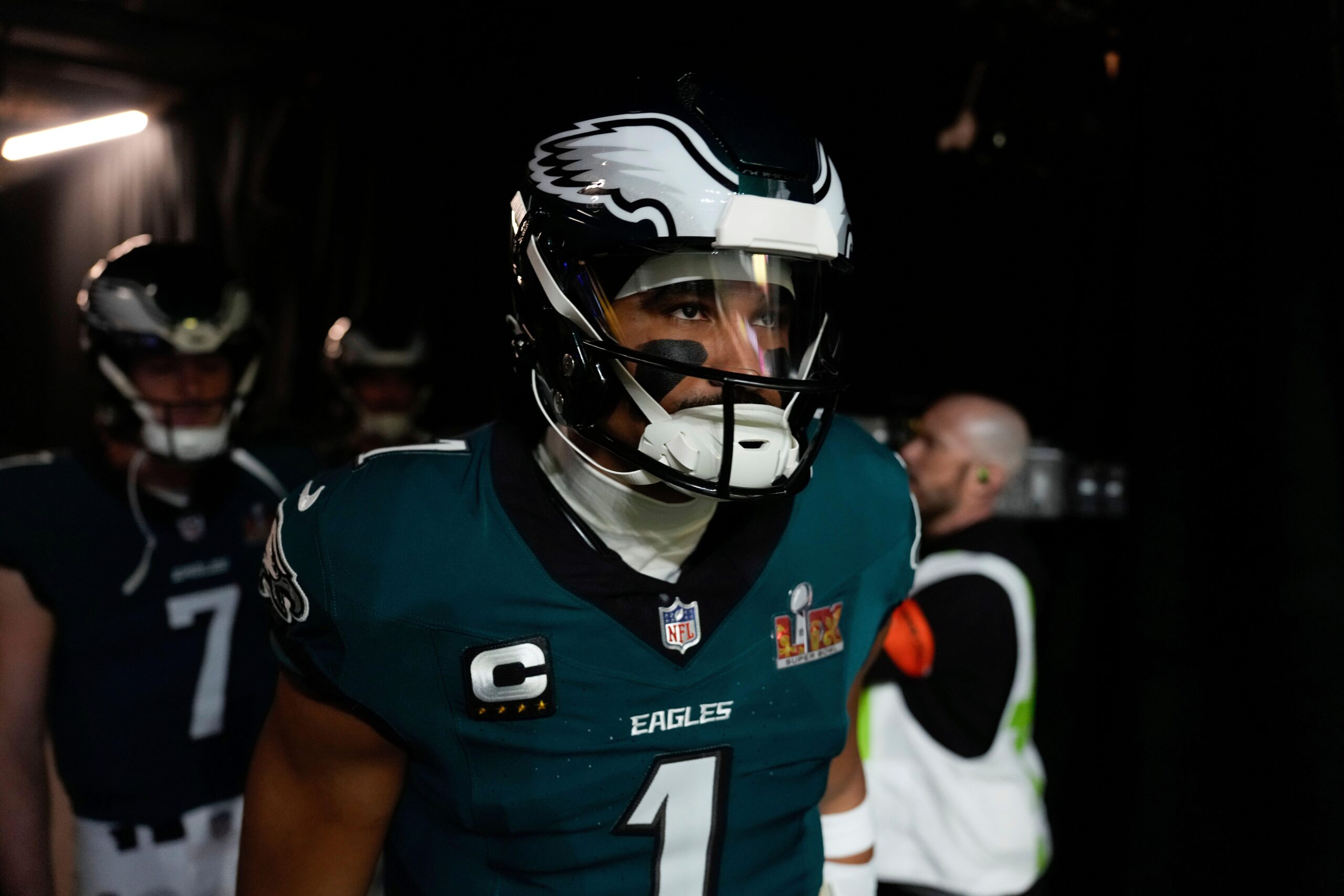Super Bowl 59: Jalen Hurts and the Eagles had all the right answers for Steve Spagnuolo’s pressure schemes

2SG2EBB Philadelphia Eagles quarterback Jalen Hurts (1) enters the field for warmups before the NFL Super Bowl 59 football game against the Kansas City Chiefs, Sunday, Feb. 9, 2025, in New Orleans. (AP Photo/Matt Slocum)
By
•
Kansas City Chiefs
•
Philadelphia Eagles
- Picking the defense apart: The Eagles’ offense averaged 0.499 EPA per play through the air — the highest mark Kansas City allowed all season outside of Week 18 when the team rested its starters against the Broncos.
- 2025 NFL Draft season is here: Try PFF’s best-in-class Mock Draft Simulator and learn about 2025’s top prospects while trading and drafting for your favorite NFL team.
Estimated Reading Time: 4 minutes
Leading up to Super Bowl 59, much of the conversation centered around Chiefs defensive coordinator Steve Spagnuolo’s aggressive blitz packages and whether the Eagles’ offense could recognize and counter them. After Kansas City’s defense confused and pressured Josh Allen on the final play of the AFC Championship Game, many believed a well-timed blitz could once again be the deciding factor.
However, that wasn’t the case. The Eagles neutralized Kansas City’s blitzes, keeping Jalen Hurts clean and ensuring Spagnuolo’s signature pressure looks had little impact on the game’s outcome.
Despite recording four sacks in Super Bowl 59, the Chiefs struggled to generate consistent pressure, affecting just 33.3% of the Eagles’ pass plays. To put that into perspective, it was Kansas City’s eighth-lowest pressure rate in a game this season and the fifth-lowest pressure rate allowed by Philadelphia.
That lack of disruption played a major role in the Chiefs’ worst pass-defense performance of the year. The Eagles’ offense averaged 0.499 EPA per play through the air, the highest mark Kansas City allowed all season except for Week 18 when the team rested its starters against the Broncos.
None of this would have been possible without the Eagles’ offensive line effectively handling Kansas City’s blitzes. On 12 blitzes, the Chiefs managed to generate pressure just three times — a 25% pressure rate, their third-lowest mark in a game all season. While two of those pressures resulted in sacks, Philadelphia largely kept Jalen Hurts clean and in control.
Coming into the game, the Chiefs had thrived when bringing extra rushers, allowing just -0.08 EPA per play on blitzes. But against the Eagles, that number flipped—Philadelphia generated 0.12 EPA per play when blitzed, the fourth-worst performance for Kansas City’s defense in a game this season.
Jalen Hurts’ passing report: 2024 postseason
Super Bowl 59 MVP Jalen Hurts took full advantage of the Eagles’ ability to pick up Kansas City’s blitzes, frequently attacking deep when he recognized extra rushers. Though he completed just four passes on the 12 blitzes he faced, two of them were big-time throws. His aggressive approach was reflected in his 17.4-yard average depth of target and 11.0 yards per attempt — both his second-highest marks against the blitz this season.
Many believed the Chiefs’ blitzes would be the deciding factor in this game, and they were—but not in the way expected. Instead of disrupting Philadelphia’s offense, they became an opportunity, as Hurts and the Eagles had all the right answers for Spagnuolo’s pressure schemes.



